

Roller bearing trucks have been around since the turn of the 20th century and began to see common use in the 1930s on passenger cars. The problem with the old solid bearing trucks was that the journal boxes needed frequent lubrication (a very labor intensive proposition). Worse still, a dry bearing would cause an overheated journal, which could result in a fire or a broken axle (and consequent derailment). Roller bearing journals were the solution, as they reduced friction and did not require any additional lubrication. The round end caps on the journals identify these trucks.
Because of their additional cost, the trucks weren’t widely used on freight equipment until the late 1950s and 1960s. Starting in 1966, new cars were required to have roller bearing trucks. At the same time, older friction bearing trucks were gradually phased out (some were retrofit with roller bearings and the rest were scrapped when their cars were retired from service). Friction bearing trucks were banned from interchange service on 1/1/91 for cars carrying hazardous materials. All other cars equipped with friction bearings were banned from interchange on 1/1/94. Cars with converted friction to roller bearing side-frames were banned from interchange on 1/1/95. A few exemptions were granted for shippers in "hardship circumstances" who could not comply with these dates. So, some cars did linger a little longer in interchange after the actual deadline dates. The reason for banning the converted trucks was that hot bearing detectors could not "see" them when they overheated.
The two most popular modern roller bearing trucks are the ASF Ride Control and the Barber S-2. Both date back to solid bearing designs. Other common modern trucks include the ASF Ridemaster and the National C-1. Each is made with various spring packages and other options in 70-ton, 100-ton and 125-ton versions.
Although all modern roller bearing trucks generally share the same basic design, there are numerous minor differences from one manufacturer to the next. To make matters worse, features can differ even within specific truck styles (end-cap design, springs, etc). Consequently, most N scale manufacturers don't bother to designate their roller bearing trucks as being anything more specific than "X-Ton". About the only rule of thumb that can be applied here is that a truck with two springs is a 70-ton truck (although three springs doesn't necessarily mean that it's not a 70-ton truck).
High quality 70-ton roller bearing trucks in various styles (and not designated as being any specific prototype) are available from Athearn, Atlas, Kato, and Evemodel (the Kato truck, #800111, is used as the end truck on their MAXI well cars)-
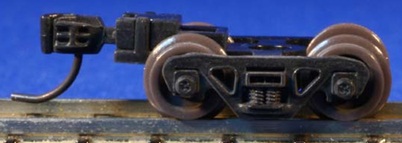



70-ton roller bearing trucks of questionable quality are available from MDC, Con-Cor/Red Caboose and Walthers -
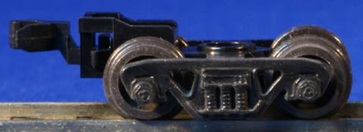
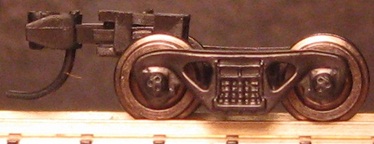

100-ton roller bearing trucks are available from Bowser, Bachmann, Kato, Athearn and Atlas. The Athearn trucks were specifically designed for their 57' FGE reefers, and are also available with electrical pickup. The Kato truck (without coupler) is used as the articulated truck on their MAXI-I well cars. A coupler-equipped version (#800091) is used on their Bethgon coal porters. The Atlas truck (with no specified prototype and different from their other 100T trucks) was first introduced on their 42' NSC Coil Cars -
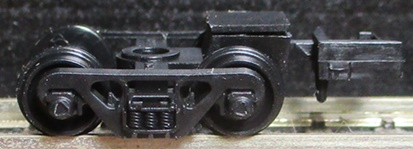


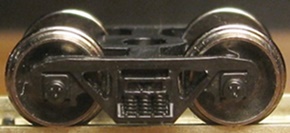
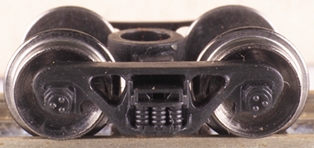
At present, Kato makes the only 125-ton roller bearing truck (#800112 - used as the articulated truck on their MAXI-IV well cars).

Kato 100-ton - wheelbase 10.13mm, frame width 16.62mm, wheel size 33", axle length 14.25mm
MDC 70-ton - wheelbase 10.56mm, frame width 16.6mm, wheel size 33", axle length 13.75mm